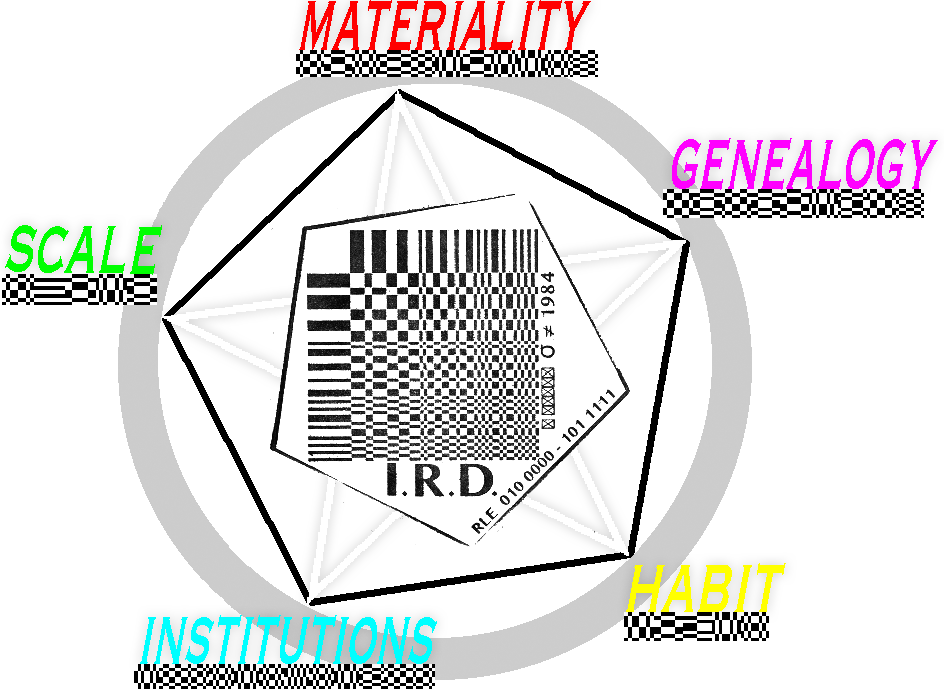2/03/2010
Interview for Klik Magazine (Slovenian print)
After my presentation of the Glitch Studies Manifesto at Pixxelpoint, Blaž Erzetič, the technical director, asked me to do an interview for Klik magazine.
The final interview is now finished and printed and looks beautiful and mysterious (its translated in Slovenian).. I am however quite sure these are some of the things it says:
>>What is glitch art?
A glitch is an unintended break of (one of) the many flows within a technological system. It is a wonderful and frightening interruption that shifts a technology away from its ordinary form and discourse. For a moment I am shocked, lost, in awe, asking myself what this other utterance is, how was it created. Is it perhaps ...a glitch? But once I named it, the momentum -the glitch- is no more…
The glitch has no solid form or state through time; it is an ephemeral, unexpected, abnormal mode of operandi. As the understanding of a glitch changes when it is being named, so does the equilibrium of the (former) glitch itself: the original experience has vanished into a realm of new conditions and the visual or audible outcome has become a new, actualized possibility.
In my 'Glitch art’ work, I portray the point where glitches and art meet.
To me, glitch art is about the stretching of boundaries and the generation of new modes: as an avant-garde of mishaps these works break up previously sealed politics and force a catharsis of conventions, norms and believes. They create a procedure in which I can learn and become more aware of a technology.
But in reality, not all that is referred to as glitch art follows the creation-through-destruction paradigm, or is an art of the momentum; many works have already passed their tipping point or don’t involve ‘real’ glitch processes at all.
For a long time I struggled with the question if ‘glitch alike’ can (or should) be referred to as ‘glitch art’. Today I think one answer to this question (besides the obvious idea that in these cases the word glitch is used metaphorically) can be found within the fact that a work of glitch art exists within different systems, for instance within the system of production and the system of reception. While the actors within the system of production did not necessarily damaged anything (and did not experience the work as creation through destruction), the perceiving actors, the audience, can still identify the technology as being destroyed. To them, these works can still stretch boundaries and create awareness and therefore be glitch art.
I can now appreciate other artists calling Photoshop experiments or noise filter creations ‘glitch art’. I think a difference lies in the fact that these works focus on a design, or end product. While personally, I like to create procedural glitches that I involve either data corruption or broken hardware and that teach me something about the technology.
>>I have seen from your previous works that you mainly work with video. What techniques do you usually use in these works? Some of them are also real time (VJ-ing). What about hardware? Did you develop any hardware of yours for glitching purposes?
Besides the video works, I do many things. One of my favorites is 404void.iq, which is based on internet research into a destroyed web.
[But]... I switch very often between different media (modern computers, consumer electronics from the 1980s, photo cameras, codecs, audio, ROMs, image file formats). My work does not focus on oppositions like for instance hard and software, real versus virtual or analogue versus digital. Instead, it is mostly an attitude towards all technologies that are controlled by rigid laws (I refer to this as critical media aesthetics). I explore what happens beyond these laws, as an investigation into the unreasonable.
I have given circuit bend workshops and made my own video black boxes in the past, but I am not so much a savant or teacher as an explorator. I cannot program and I only learn by trying and failing.
I think that glitch studies is a very complex studies that takes place between disciplines and categories of both theory and practice, sense and nonsense. Without a nonsense approach, glitch studies cannot exist – to me this means I am free to do anything I cannot do.
>>What comes next? What is some new technology in sight that you can’t wait to put hands on and dismantle its primal functionality?
I moved from the grain of celluloid to the magnetic distortion and scanning lines of the cathode ray tube. I wandered the planes of phosphor burn-in, rubbed away dead pixels and now watch performance art based on the cracking of LCD screens. I don’t plan; I just surf within vortex of technology. But yea, maybe it will be a floppy.
Subscribe to:
Post Comments (Atom)



No comments:
Post a Comment